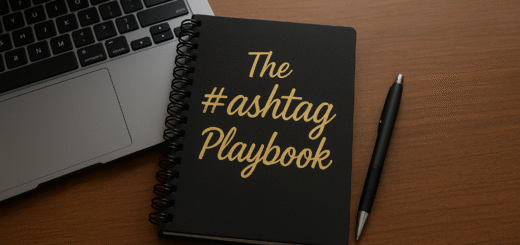Once upon a time…
…there was a young online marketer who was about to lose everything.
He had the best products, the prettiest website and plenty of research telling customers why his products worked wonders.
But no one would buy.
He tried everything he could think of – ads, social media, email marketing, joint ventures, affiliates – but still when he checked his email, there were no notifications of sales.
Out of money with a stack of bills on his desk and creditors calling, he knew it was time to do the one thing he never wanted to do again…
Find a job.
Embarrassed by his failure and dreading a job search, he put off looking for work for one more day and went to see his Grandma Elsie, because she always had a way of making him feel better.
Sitting at her kitchen table, he found himself telling her everything. He told her how he came to create his products, why he loved his products and how he knew that his products could transform the lives of thousands of people if only someone would listen to him.
He told her his story with feeling and passion, and she listened closely to every word he said.
When he was done, his Grandmother took his hand and told him the following,
“If you will tell people your story, just like you told me, they won’t be able to stop themselves from buying your products.”
Not believing her, he went home to start his job search that night. But as he sat at his desk thinking, he decided he didn’t have anything to lose. So, he turned on his video camera, adjusted the lights and told the story of how he came to create his line of products.
When he was done, he dried his eyes, posted the video to social media and got ready for bed.
But he didn’t sleep well at all.
You see, he had sales notifications hooked to his cell phone, so that each time one came in, his phone would ring.
The first ring came about 10 minutes after he posted the video, while he was brushing his teeth.
The second one came in a minute later.
And then it happened. The sales started pouring in so fast, his phone didn’t stop ringing for nearly 3 days.
He never did look for the job.
Instead, he became a master storyteller, and ever since then just about every product he promotes sells like crazy because of his stories.
You might say he’s got the Midas touch, all because of a little piece of advice his Grandmother gave him.
“The most powerful person in the world is the storyteller. The storyteller sets the vision, values and agenda of an entire generation that is to come.” – Steve Jobs
Storytelling… for business??
You’ve heard that you should use stories in your marketing.
But how the heck does that work?
You’re not a storyteller, you’re an entrepreneur, right?
It’s not your job to tell stories.
Or is it?
If you’ve visited entrepreneur.com then you know it has a ton of content. You’ll find how-to guides, news and a whole lot more.
But consider this: Out of all that content, the stories are the most popular.
Here are the 3 most-read pieces of content on Entrepreneur:
‘We Thought We Were Doing The Right Thing’: Jasper’s Restaurant in Maryland Continued to Serve Food With Dead Customer In Bathroom https://www.entrepreneur.com/business-news/woman-dies-in-a-restaurant-bathroom-guests-continue-dining/437340
The First-Ever Tweet in NFT Format Sold for $2.9 Million in March 2021. The Most Recent Bid Is $132. https://www.entrepreneur.com/news-and-trends/once-worth-29-million-nft-of-first-ever-tweet-is-now-132/437349
The Second-Richest Man in the World Sold His Private Jet, Thanks to Twitter Users https://www.entrepreneur.com/business-news/twitter-forces-second-richest-man-in-the-world-to-sell-his/437369
And you’ll see the same trend on nearly every website you visit.
People LOVE stories.
And if you can find ways to incorporate stories into your own marketing, you’ll go far.
Why Use Stories in Your Marketing?
Because storytelling in business is a powerful marketing tool. Just look at a few of the benefits…
Engaging customers – if you want to reach customers on a deeply personal level, you’ve got to use stories
Engaging employees – stories help employees to connect with the business and feel they are a part of something important.
Creating memories – the longer a prospect remembers your business, the more likely they are to buy. Stories resonate on a deep level with people, creating stronger memories than just about any other type of message.
Triggering emotions and feelings – people might justify a purchase with facts but it’s the emotion that sells the product. No emotion means no sale.
Develop customer loyalty – when customers emotionally connect with a business, they become loyal to that business. Apple customers are a great example of this.
Competitive advantage – storytelling allows a business to stand apart from competitors by connecting with the audience on a deeper level. Stories leave lasting impressions while facts do not.
Persuasiveness – stories are a great way to overcome objections and persuade customers to buy.
How Story Telling Increased the Value of an eBay Item by 6395%
You’ve heard the advice:
Use stories to sell.
“Storytelling is the easiest form of selling.”
“People buy when you use stories.”
But what does that mean exactly?
Are you supposed to invent some fairy tales to sell your stuff? Or maybe create this epic rags to riches story of how your product saved your life and made you rich, handsome and irresistible to women?
Today we’re going to cover why you might want to use stories to sell stuff, why storytelling works and how to create these stories yourself even if you think you can’t write a good story to save your life.
Stories will always sell better than facts. People love stories, they remember stories, and stories have the ability to influence customers on a deeper subconscious level than just about anything else.
In 2006 New York Times Magazine journalist Rob Walker wanted to discover if story telling really is the most powerful tool of all.
He began his project by collecting 200 thrift store items with an average cost of about $1.00 apiece. He took special care to ensure that nothing he purchased was particularly valuable.
He chose things like a plastic banana, an old wooden mallet, a plastic motel room key and so forth. Nothing with any real value.
Then he called 200 professional authors and asked them to join his “Significant Object Study” by writing a story about one of the objects.
He then auctioned off the items on eBay using the stories he had received from the authors.
You can guess what happened next. One of the items was a small plastic bust of a horse’s head. He’s paid $0.99 for it, and he sold it – with a great story in the description – for $62.95.
In total he spent $197 on the items and sold them for almost $8,000. That’s a markup of more than 6,300%. These stories transformed otherwise worthless objects into things of highly perceived value.
Stories play on our emotions, and when we feel these emotions we become less objective. We can even become easily duped into buying and doing things we might not otherwise do, which is how con men have thrived through the centuries.
These items were essentially junk. They cost $197 and he sold them for $8,000.
If you would like to see sample objects and the stories that sold them, along with the prices they reaped, you can go to this site:
https://significantobjects.com/
Click on a thumbnail to read the story that corresponds with the item.
Hopefully you are already selling awesome products or services that people want and need. Ask yourself: How many more of your products and services could you sell if you created brilliant stories to go with them?
Two Types of Marketing Stories – Mastering Them Both
When it comes to online marketing, there are two main types of stories.
Type I
There are stories that are directly related to your business.
These are the stories of how your company came to be, how each product was developed, the customers whose lives have been transformed, the objections that are overcome and more.
Every one of these stories is something that will be unique to your brand.
It takes some skill to create these stories, and we’ll be covering them in depth in next month’s issue. In fact, after you read that issue, you’ll know exactly how to craft these stories using templates and the key ingredients necessary to make the stories super effective at selling your products.
Type II
This month, I want to direct your attention to the second type of story that some marketers use to great effect, and it’s essentially any interesting story that can be tied to the product.
No doubt you’ve seen these via email and in social media.
Someone tells the story about how they took a trip and everything went wrong. Then they segue into a promotion by saying, “But when you become the next XYZ member, you’ll never have to worry about anything going wrong again.”
Or they tell the story about how their dog got lost for three days before finding her way home, and then segue into how the customer will never be lost with the ABC product.
With this method you can essentially use any interesting story to capture the prospect’s attention before tying it into your product or service.
What I like about this method is you don’t need to become great at storytelling as long as you can find a way to tie a story to the call to action you want the audience to take.
In other words, this second method is just about as easy as finding a story that you want to use, rewriting it into your own words and then using it.
It really is a massive shortcut to storytelling success.
Let me give you an example…
I went online and found a story at random that I’m about to share with you. The story promotes no product whatsoever; it’s simply entertaining.
But since people love stories so much, maybe you can find a way to link this story to your own product.
At the end I’ll suggest some possible ways you could segue this story into a call to action, regardless of what niche you might be in.
And of course, this is just an example. You could do something similar with most any story that strikes your fancy.
Just be sure to rewrite it into your own words, first.
Here it is:
An old tired-looking dog wanders into a guy’s yard. He examines the dog’s collar and feels his well-fed belly and knows the dog has a home.
The dog follows him into the house, goes down the hall, jumps on the couch, gets comfortable and falls asleep. The man thinks its rather odd, but lets him sleep. After about an hour the dog wakes up, walks to the door and the guy lets him out. The dog wags his tale and leaves.
The next day the dog comes back and scratches at the door. The guy opens the door, the dog comes in, goes down the hall, jumps on the couch, gets comfortable and falls asleep again. The man lets him sleep. After about an hour the dog wakes up, walks to the door and the guy lets him out. The dog wags his tale and leaves.
This goes on for days. The guy grows really curious, so he pins a note on the dog’s collar: “Your dog has been taking a nap at my house every day.”
The next day the dog arrives with another note pinned to his collar: “He lives in a home with four children — he’s trying to catch up on his sleep. Can I come with him tomorrow?’
Possible segues…
1: If you’re feeling as tired as this old dog, I might have the solution… (Could be vitamins, exercise, meditation, etc.)
2: Have you got small children that sometimes drive you a little crazy? Here’s how to make your complicated life a whole lot easier… (Child rearing product)
3: Do you want to get away from it all? We’ve got just the vacation / spa / weekend getaway for you.
4: Notes on a dog’s collar are one way to communicate. Here’s another with (insert benefits)…
As you can see, with just a little creativity you can bend a story to fit many different products and services.
Where Can You Find Stories Like This?
They are everywhere.
First, look at your own life. You already have a thousand stories of your own that you can put to use, based on things that you’ve done, places you’ve gone and interactions you’ve had with other people.
Next, use sites like Quora, Bored Panda and Reddit to find stories. Adapt them as necessary and don’t plagiarize.
Wherever you are on the Internet, keep your eyes peeled for good stories.
When you watch television or movies, watch for plotlines you can use for stories.
When you read, look for stories.
When you talk to people, listen to their stories.
Stories are all around you and you’ll find there are far more within your reach than you will ever need. Keep a log of stories you read and hear, and choose the ones the ones that work best for you.
Here, I’ll share one of my favorite webpages with you:
It’s 99 super short stories that will knock your socks off. I’ll place the first story here, and then you can visit this site to find the other 98.
https://www.marcandangel.com/2012/02/05/99-tiny-stories/
Today, it’s been ten years since my abusive ex-fiancé sold my favorite guitar. He sold it on the day I left him. When I went to claim my belongings, he was proud that he had sold it to a pawn shop. Luckily, I managed to track down the guy who bought it from the pawn shop. He was really sweet, and gave it back to me for free, on the condition that I accompany him on his front porch for an hour to play guitar with him. He grabbed a second guitar and we ended up sitting there on his porch for the rest of the afternoon playing music, talking, and smiling. He’s been my husband for nine years now.
Holy smokes, great story.
Stories are everywhere. Take some time this month to find some great stories and to adapt them to your own marketing on email and social media.
And then next month, you’re going to discover how to create your own stories specifically tailored for your customers about your business.
Once you’ve mastered these two types of stories for your business – general stories that can be segued into your business and stories tailored to your own business – there will be no stopping you.
You will have a much easier time getting followers on social media.
You will build your audience and email list faster.
You will get more listeners on your podcast.
You will make more sales.
Your customers will be more loyal to you.
And you’ll be making MORE money while doing LESS selling.
There simply is no downside to mastering the use of stories in your business.
Get busy finding stories that work for you, and we’ll see you next month!













